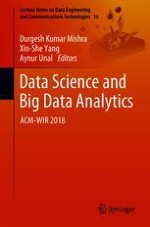2019 | OriginalPaper | Chapter
Baron-Cohen Model Based Personality Classification Using Ensemble Learning
Authors : Ashima Sood, Rekha Bhatia
Published in: Data Science and Big Data Analytics
Publisher: Springer Singapore
Activate our intelligent search to find suitable subject content or patents.
Select sections of text to find matching patents with Artificial Intelligence. powered by
Select sections of text to find additional relevant content using AI-assisted search. powered by
